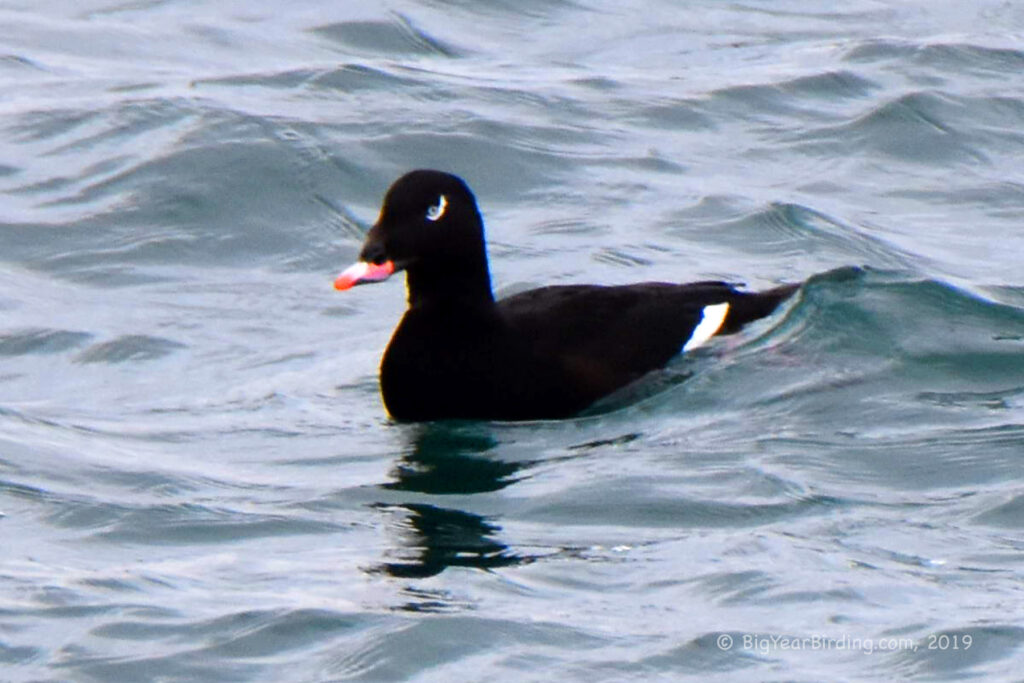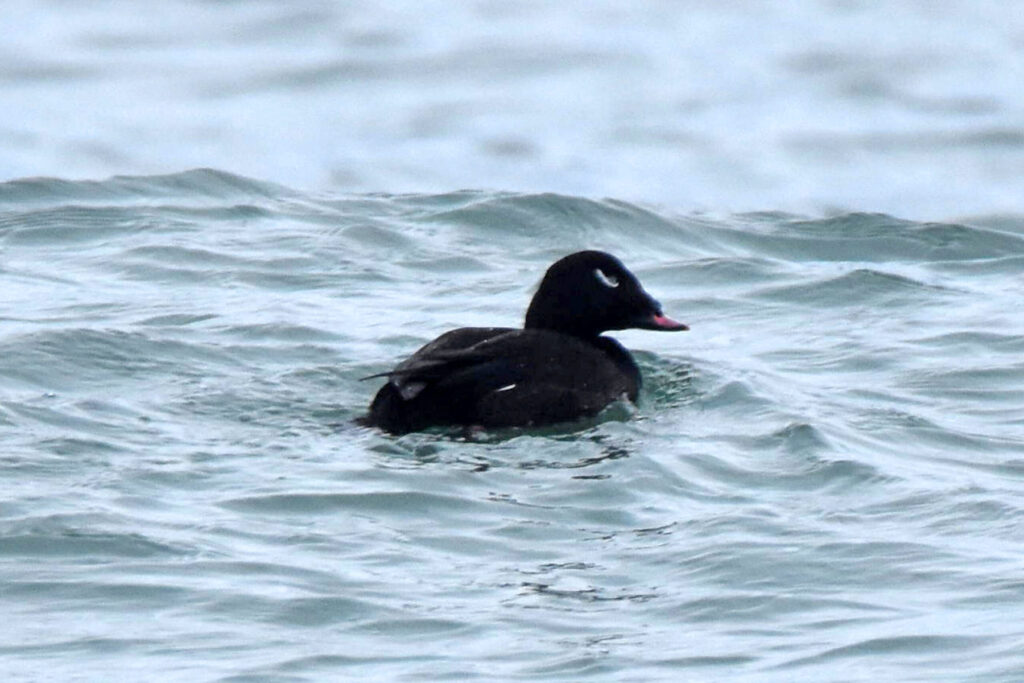
The White-winged Scoter (Melanitta deglandi) is a large sea duck that can be found in North America during the winter months. Adult males are approximately 22-25 inches in length, while females are slightly smaller, measuring 19-22 inches in length. Both sexes have a wingspan of approximately 35-40 inches.

One of the most distinguishing field marks of the White-winged Scoter is the presence of a white patch on the wing that is visible in flight. In addition, males have a black body with a white forehead and nape, while females are dark brown with a lighter brown head. Both sexes have a large, triangular bill that is black with a yellow knob at the base.
White-winged Scoters breed in the far north, primarily in Alaska and Canada, and then migrate south during the winter months to coastal areas in the lower 48 states and Mexico. During migration, they can be found in large flocks near open water, such as along the coast or on large bodies of water such as lakes or reservoirs.
In terms of weight, male White-winged Scoters can weigh up to 3.5 pounds, while females are slightly smaller and weigh up to 2.5 pounds. Despite their large size, they are excellent divers and can dive up to depths of 100 feet in search of food. Their diet primarily consists of mollusks and crustaceans, but they will also eat small fish and aquatic plants.

Due to their large size and distinctive markings, the White-winged Scoter is a popular bird for birdwatchers and wildlife enthusiasts. However, their population has declined in recent years due to habitat loss and degradation, as well as hunting pressure in some areas. Conservation efforts are underway to help protect and preserve this beautiful species for future generations to enjoy.

